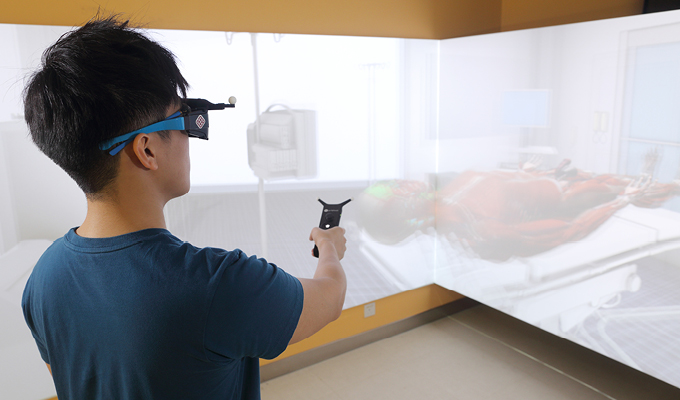
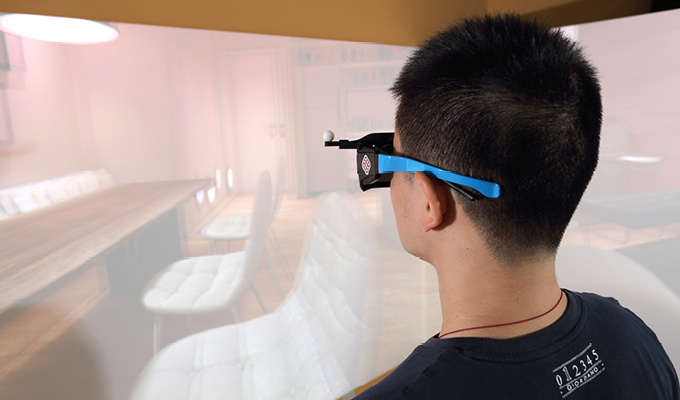
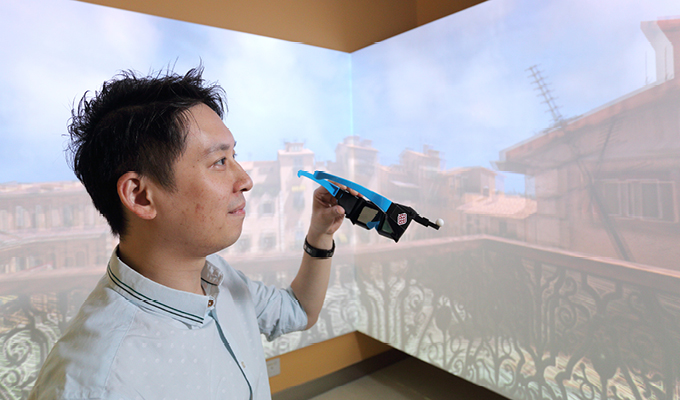
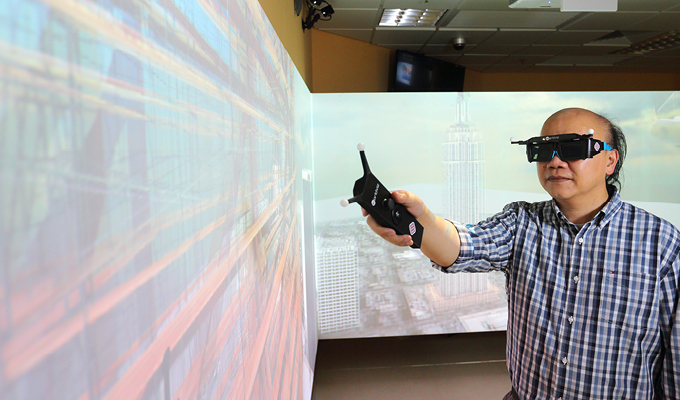
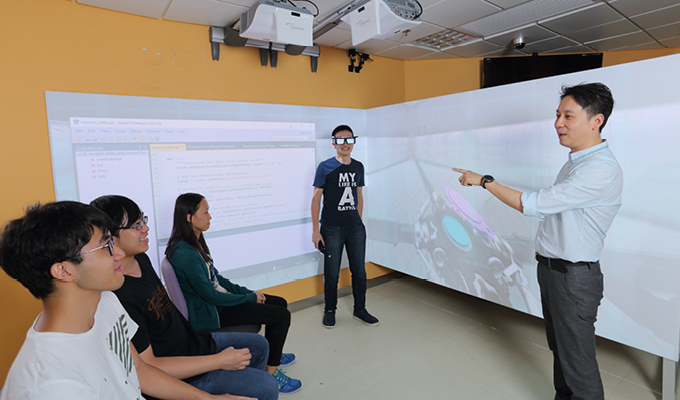
Existing virtual and augmented reality technologies have been well developed with wide applications. In this issue, Dr Korris Chung and Dr Peter Ng Hiu-fung introduced PolyU’s latest development in applying these technologies.
How is the potential of developing virtual and augmented reality technologies?
Dr Chung: The digital games market is growing rapidly in recent years. The revenue in this market worldwide is anticipated to increase by some 30% in the coming years. The virtual reality (VR) and augmented reality (AR) technologies are considered as future focus of the entertainment and digital game industry. Talents for such game market are in high demand in Hong Kong, the Chinese mainland and worldwide. I believe, graduates specialising in digital game development have bright career prospects.
What are the new development in this area at PolyU?
Dr Chung: Along with this development trend and the nurturing of related talents, the Computing Outreach Lab in our Department of Computing has recently installed a set of million-dollar VR and AR facilities. With the equipment, students can better master these cutting-edge technologies, thus enhancing their pace and capability in game development.
The facility is distinguished by the only headset-free VR projector in Hong Kong. It can display high-quality and complicated 3D images in multiple screens, and can support multi-users viewing and interactions at one time.
How can these facilities apply in learning and teaching?
Dr Ng: In the “game design and development” course offered by our department, the learning of VR and AR technologies is originally very much based on theories and the foundation of mathematical reasoning, without anything tangibly seen or touched. With the new facilities, students can learn and apply these technologies in reality platforms and can speed up their programming process, from one year of learning and programming to merely one month.
Apart from teaching software programming, we have also applied these technologies in other areas. For example, in the field of rehabilitation, students can learn human anatomy by using VR to project the human body and show the position of injured muscles. In optometry, we are developing a VR app for detecting eye diseases using virtual images to replace the light used for testing glaucoma. It will bring more fun to the test and is expected to apply to other tests such as macular degeneration in future.
We hope that bringing in such facilities can create more realistic environment to unleash students’ creativity in designing and developing games. This will help equip them for seeking jobs and even starting up their own businesses in future.
What are the other applications of VR and AR technologies?
Dr Ng: Apart from teaching purpose, VR and AR technologies can be widely applied. A simulated planet VR game called “HelloPlanet” designed by our students allows players to perform the role in overseeing the eco-system in the planet. Delivering environmental-friendly messages, the game earlier won the championship at the Microsoft Imagine Cup (game category) in Hong Kong region.
Using VR technology, students have designed pre-vocational practice games for the mentally-disabled and pre-vocational training for ex-mentally ill people. These technologies can also be applied in physiotherapy treatment, viewing open houses and military training.
PolyU applies VR and AR technologies in teaching and learning, bringing an extraordinary VR-AR learning experience to students. The Computing Outreach Lab in PolyU’s Department of Computing installed a set of million-dollar VR and AR facilities. With the equipment, students can better master these cutting-edge VR and AR technologies, thus enhancing their pace in the capability in game development.
The learning of VR and AR technologies is originally based on theories and the foundation of mathematical reasoning, without anything tangibly seen or touched. With the new facilities, students can learn and apply these VR and AR technologies in reality platforms and can speed up their programming process. Also, such facilities can create more realistic environment to unleash students’ creativity.
We also apply VR technology in other disciplines. For example, students in the field of rehabilitation are able to learn human anatomy by using VR to project the human body and show the position of injured muscles.
VR and AR technologies definitely enriches lessons and learning experiences of students. A research revealed that VR-based education offers advantages in boosting learning and retention of students. Therefore, VR can play an important role in teaching in that it provides an interesting and engaging way of acquiring information to suit all needs. VR in education may become the trend of the industry.
Apart from educational purpose, VR and AR technologies can be widely applied. While VR is commonly associated with gaming, it is being used in many more capacities.